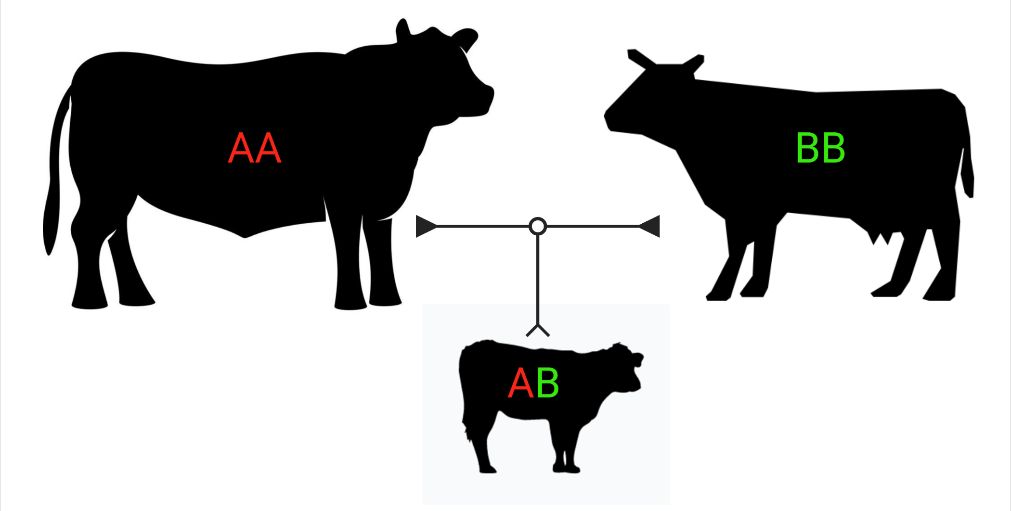Introduction
Beef cattle production in Florida is primarily based on cow-calf grazing systems. In recent years, we have seen advances in all facets of the cow-calf production system, from the increased adoption of defined breeding seasons to nutritional strategies tailored to wean heavier calves. However, even as the use of these technologies becomes more commonplace, the demands of calf buyers continue to increase. Buyers are becoming increasingly interested in purchasing calves that come with documented genetic parent verification.
Parent verification is used to verify the parents (dam and sire) of a calf. The main goal of the practice is to increase the accuracy of pedigree information, therefore providing customers with reliable information. Parent verification can be beneficial for seedstock and commercial operations. The genetic verification is particularly useful in situations including multi-sire breeding pastures, artificial insemination or embryo transfer followed by clean-up bulls, calves switched at birth, and ambiguous data records. This publication is intended for beef producers, farmworkers, and Extension agents. It aims to provide guidance on how to perform successful samples collection and shipping for parent verification.
How does parent verification work?
For the producer, the physical process associated with parent verification is quite simple. Samples from the calf and its potential parents must be collected and submitted for genetic comparison. Genetic material only has to be submitted from an individual animal once. Virtually all artificial insemination (AI) sires will already have genetic material on file, and the same will be true for cows and herd bulls after their initial submission. Therefore, it is entirely possible that genetic material from the calf in question will be the only sample to submit. A blood sample is perhaps the simplest and most widely used type of genetic sample. However, other types of tissues such as tail hair, semen, and tissue samples from ear notches can also be used, with the majority of samples being shipped at room temperature. The actual analysis and comparison of the samples are generally handled through the breed association connected with the animals in question (Table 1).
Table 1. Comparison of prices for parent verification among breed associations.
The newest technique used for parent verification is based on single-nucleotide polymorphism (SNP) testing, which allows greater accuracy compared to formerly used tests such as single tandem repeat (STR) or microsatellite testing (MIP). One crucial factor is that both the calf and the parents should be tested using the same DNA technology (e.g., MIP or SNP). Most breed associations are migrating and retesting their animals to SNPs. Costs of SNP-based parent testing can vary from $15 to $25 per sample. Additional genetic testing using the same blood sample can be added on to parent verification. Add-ons can include complete genotyping, single traits, or genetic defects testing. Companies and associations have special pricing depending on the number of animals to be tested.
The main idea behind parent varification is that each calf will receive one copy ("allele") of the potential gene marker from each parent. For example (Figure 1), if a bull carring the alleles “AA” is crossed with a dam carring the alleles “BB,” the calf must have the alleles “AB” because the calf must receive a gene copy from each parent. If the calf tested were either AA or BB, then the calf would not be compatible, and parentage would be excluded. This is done by selecting and testing compatibility based on several unique SNPs (i.e., DNA markers).

Credit: Felipe A. C. C. Silva
How do I collect and ship blood or hair samples for parent verification?

Credit: Felipe A. C. C. Silva
To collect blood samples:
- Record the animal ID on the DNA card.
- Wipe the ear clean.
- Prick the vein in the animal's ear with a sterile needle (1).
- Touch the circle on the DNA card to the blood site in the ear (2).
- Fill the circle and allow the card to dry away from sunlight for 24 hours before mailing.
To collect tail hair samples:
- Record the animal ID on the DNA card.
- Collect around 20 hairs from the tail switch. Check that root bulbs remain on the hair sample (1).
- Place the bulb on the sticky flap. Hair bulbs must be present to perform the test (2).
- Press the side on top of the bulbs to seal the sides and trim excess hair to the edges of the hair card (2).
To ship the samples (either blood or tail hair samples):
- Mail samples in an envelope or small box. Do not mail in a sealed plastic bag (3).
- The laboratory will process the sample and compare it with potential parents (4).
- Results will state if the calf matches or does not match potential parents (5).
Summary
Parent verification is feasible and useful in both commercial and seedstock operations. The advances in the test procedure allow an easy and affordable collection with the benefits of adding several genetic tests to the results. Tests can be done through your breed association or private laboratories. If you have any questions or want to learn more about this technology, contact your local UF/IFAS Extension agent.